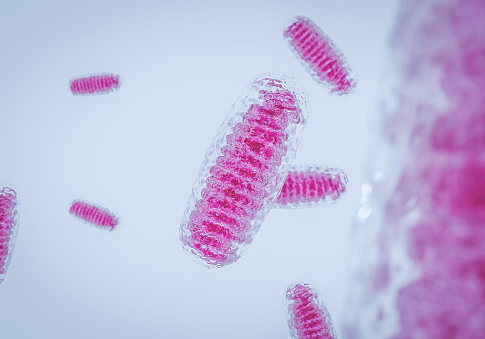

There are many compelling reasons to exercise. Now, research led by scientists at University of Utah Health reveals another. Exercise reshapes an important component of our cells, called mitochondria, tiny factories responsible for manufacturing energy for the body. Published in Science Advances, results from the study point to a previously unappreciated role for mitochondrial membrane lipids on energy production and muscular function.
“The results suggest that mitochondria adapt to how much energy the cell is using. If we don’t exercise, our mitochondria learn to become less efficient. Less efficient mitochondria can trigger cell events that are bad, in this case muscle wasting” says the study’s senior author Katsu Funai, PhD, associate professor in physical therapy & athletic training at U of U Health.
Scientists have long known that exercise influences how well mitochondria work but the mechanisms had remained elusive. Funai decided to look more closely at a potential role for lipids after another study led by his team hinted that they might be involved in modulating efficiency of energy (ATP) production.
To test the idea, he and his research team trained mice on the treadmill for five weeks. After, they observed a significant increase in the amount of a specific lipid, phosphatidylethanolamine (PE), in the mitochondrial membrane. The reverse was also true. Prolonged disuse of leg muscles decreased the amount of PE, demonstrating that the amount of this lipid in the membrane depended on physical activity.
The real test came when the scientists genetically engineered mice to make less of the lipid in skeletal muscle, reducing the amount by about half. Under those conditions, muscle mitochondria didn’t work well and muscles deteriorated in a way that resembled atrophy. It didn’t take long — six to eight weeks — before the animals died because the muscles that control breathing stopped working.
Within cells, mitochondria became disorganized, affecting the circuitry that controls energy production. Overall, the amount of energy produced by cells in the muscle went down.
Carrying out measurements focusing exclusively on mitochondria revealed impacts that had never been seen before. This is the first study to evaluate lipid composition in just the organelle rather than in the whole cell, revealing large localized shifts that were otherwise masked. The scientists also utilized a diagnostic platform for measuring oxygen consumption and energy production in mitochondria specifically.
“The changes we saw were just huge,” says Funai. “But we never would have seen them if we analyzed the whole cell, instead of specifically in mitochondria.”
Their findings raise the possibility that changes in lipid composition could be one reason why muscles atrophy when we don’t exercise. They could also possibly explain why we rapidly lose our function to breathe when patients are on life-support. Additional experiments will need to be carried out in humans to determine the answer.
# # #
The research was carried out in collaboration with investigators from University of Utah Health, East Carolina University, University of Minnesota, University of Florida, Duke University, University of Michigan, and the University of Alberta, and published as “Mitochondrial PE potentiates respiratory enzymes to amplify skeletal muscle aerobic capacity”. Funding was provided by the National Institutes of Health, Larry H. & Gail Miller Foundation, Uehara Memorial Foundation and the American Heart Association.